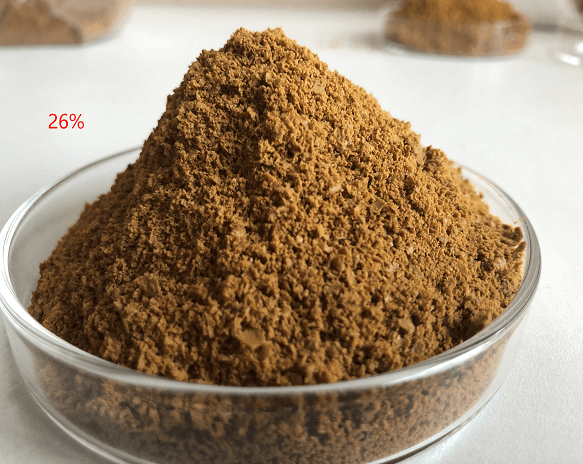
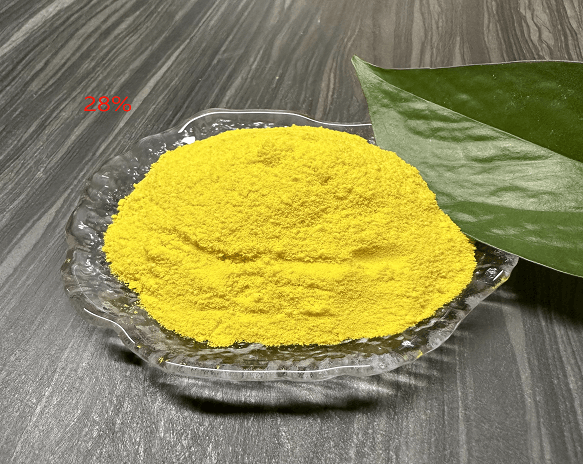
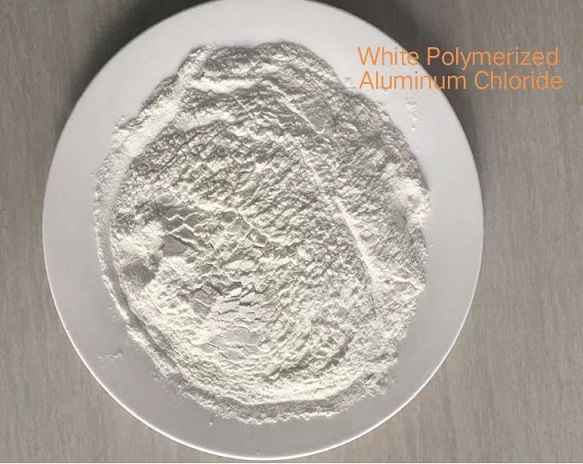
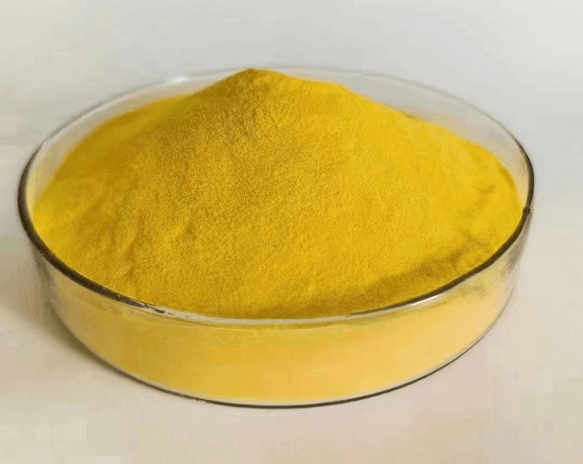




Polymerized aluminum chloride(pac) is a kind of inorganic polymer coagulant, due to the bridging effect of hydroxide ions and polymerization of multivalent anions and the production of higher molecular weight, higher charge of inorganic polymer water treatment chemicals.Its coagulation effect is shown as follows:
a. Strong electrical neutralization of colloidal substances in water.
b. Excellent bridging adsorption effect of hydrolysis products on suspended matters in water.
c. Selective adsorption of soluble substances.
a. The purified water quality is better than aluminum sulfate coagulant, and the cost of water purification is lower than that of aluminum sulfate coagulant by 15-30%.
b. Fast floc formation, fast settling speed, larger processing capacity than traditional products such as aluminum sulfate.
c. The alkalinity of the consumed water is lower than that of various inorganic coagulants, so it may not throw or throw less alkaline agent.
d. adapt to the source water PH5.0-9.0 range can be cohesive.
e. Less corrosive, good operating conditions.
f. Solubility better than aluminum sulfate.
g. Low increase of salt content in treated water, which is favorable for ion exchange treatment and high purity water production.
h. The adaptability to source water temperature is better than inorganic coagulants such as aluminum sulfate.
I. Type Classification
Liquid polymerized aluminum chloride, solid polymerized aluminum chloride
II. Process Classification
a. Roller type polymerized aluminum chloride, aluminum content is general, water insoluble matter is high, mostly used in sewage treatment.
b. Plate and frame type polymeric aluminum chloride with high aluminum content and low water insoluble matter. Used for sewage treatment and drinking water treatment.
c.Spray-dried polymerized aluminum chloride with high aluminum content, low water-insoluble matter and fast dissolution rate. Used for drinking water and higher standard water treatment.
The use of polymerized aluminum chloride
a. Urban water supply and drainage purification: river water, reservoir water, groundwater b. Industrial water purification c. Municipal wastewater treatment d. Recovery of useful substances in industrial wastewater and sludge, promotion of coal dust settling in coal washing wastewater, recovery of starch in starch manufacturing industry e. Various industrial wastewater treatment: printing and dyeing wastewater, leather wastewater, fluorine wastewater, heavy metal wastewater, oily wastewater, papermaking wastewater, coal washing wastewater, mining wastewater, brewing wastewater, metallurgical wastewater, meat processing wastewater.f. sewage treatment g. paper sizing h. sugar refining i. casting molding j. cloth wrinkle k. catalyst carrier l. pharmaceutical refining m. cement quick-setting n. cosmetic raw materials.

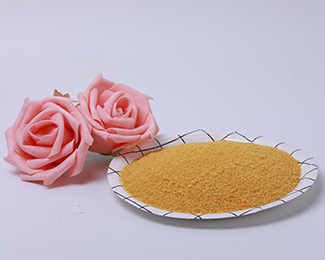
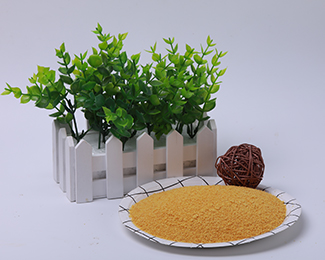
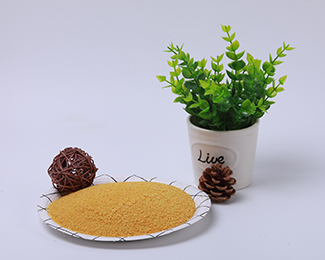
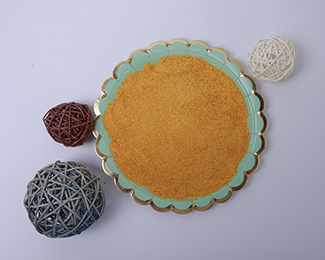
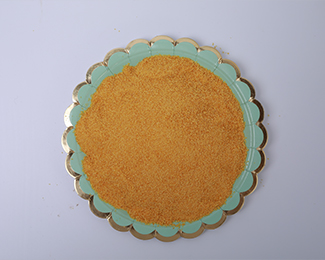
White polymerized aluminum chloride is a white or milky white milky fine powder processed from aluminum hydroxide powder and high purity hydrochloric acid by spray drying, which is very easy to melt when exposed in the air. Also known as: spray-dried polymerized aluminum chloride
It has the following characteristics compared with ordinary polyaluminum:
1.High content of AL2O3,≥29.5%
2.Low salinity, only 50%, compared to about 90% for ordinary polyaluminum
3.Water insoluble matter is small, only 0.3%, while ordinary polyaluminum has more than 2%.
4.Pure color, the product water solution is clear and transparent without any color, while the color of ordinary polyaluminum aqueous solution is yellow or brown.
Product Use
1.It is mainly used for the treatment of drinking water, industrial water supply, oilfield re-injection water, circulating cooling water and various kinds of sewage (such as urban sewage, oily sewage, printing and dyeing sewage, paper sewage, decolorization of sewage from steel mills, etc.).
2.Paper sizing and precipitating agent, sugar decolorizing and clarifying agent
3.Used in many fields such as tanning, medicine, cosmetics and precision casting.
In recent years, white polymeric aluminum chloride has replaced aluminum sulfate as the neutral sizing and precipitating agent in the paper industry. Compared with aluminum sulfate, white polymeric aluminum chloride has the following characteristics:
1) A large number of positively charged, morphologically stable Polynuclear hydroxyaluminum complex can effectively promote flocculation and sizing.
2) White appearance, very low iron content, can meet the needs of manufacturing high-quality paper.
3) Polymerized aluminum chloride is a pre-hydrolysate of aluminum chloride, the degree of hydrolysis is relatively low, and the decrease in pulp pH is smaller than that of aluminum sulfate.
4) Aluminum sulfate is only suitable for acidic sizing, while polymerized aluminum chloride can be sized in both acidic and neutral environments, which significantly reduces the corrosion of the system and makes the treatment of white water easier.
5) It can be filled with cheap calcium carbonate filler, which not only reduces the production cost, improves the whiteness and folding resistance of paper, but also overcomes the unavoidable drawbacks of synthetic adhesives (e.g., AKD) (such as slippage, difficult to control the degree of sizing, etc.).
6) The use of polymerized aluminum chloride sizing, slurry retention aid, filtration aid significantly improved.
7) Paper properties, with the exception of break length, are improved to varying degrees.
Usage: Formulate the solid product into 10% liquid product, add 1.5-3.0% of the liquid product into the pulp to be sized, and stir to make it mix well with the pulp. The usage is the same as aluminum sulfate, the dosage is only one-third of aluminum sulfate, and the dosage is 2%-3% according to the calculation of dry paper.
Usage
1. The dosage varies according to the treated water, generally the dosage for water purification is about 5-100g/ton for liquid products and 20-25kg/ton for solids (in terms of commodities), which can be decided by beaker test.
2. the preparation can be directly added to the water, the amount of water can be added according to the dosage and the amount of water to be processed to decide, the water should be stirred after adding.
Cautions
1. Water treatment chemicals of different manufacturers or grades should not be mixed and should not be stored with other chemicals.
2. the original liquid and diluted liquid slightly corrosive, but lower than a variety of other inorganic coagulants.
3. Effective storage period of the product: half a year for liquid, two years for solid. Solid products can still be used after moisture.
4. the product is reasonably added, after purification of water quality in line with the health standards for drinking water.
Product Appearance:
High-grade white, medium-grade light yellow powdery
Characteristics of Spray Drying:
Spray granulation is to atomize the polyaluminum chloride into tiny particles while it is dried, and this granular dosage form has good application performance. Polyaluminum chloride is a water-soluble substance with good thermal stability and high solubility. In the drying process, the polyaluminum chloride solution with 40%-50% solid content is introduced into the high-pressure pump, and then it is atomized into the atomizer in the drier through pressurization to be dispersed into tiny droplets, and the droplets are dried to get the granular product, so that the drying and granulation are completed at the same time.
Product Characteristics
1.A large number of positively charged, morphologically stable multinuclear hydroxyaluminum complexes can effectively promote flocculation and sizing.
2.White in appearance and with very low iron content, it meets the needs of manufacturing high-quality paper.
3.Polymeric aluminum chloride is a pre-hydrolysate of aluminum chloride, with a relatively low degree of hydrolysis and a smaller decrease in pulp pH than aluminum sulfate.
4.The use of polymerized aluminum chloride sizing, slurry retention and filtration aids significantly improved.
5.Paper properties, with the exception of break length, are improved to varying degrees.
The difference between spray-drying type polymerized aluminum chloride and roller-drying type polymerized aluminum chloride production process.
Spray drying: Liquid raw materials----pressure filtration----Spray tower spray drying----finished product
roller drying: Liquid raw materials----natural sedimentation----roller drying----finished product
Polymerized aluminum chloride is a kind of cationic inorganic polymer flocculant with multiple hydroxyl groups and multiple nuclei complexes. Polymerized aluminum chloride has low corrosiveness to pipeline equipment; Polymerized aluminum chloride is widely used in the field of drinking water, industrial water and sewage treatment.
Technical specifications and uses: applied to the source water purification, urban sewage, sludge treatment, a variety of industrial, chemical wastewater treatment; cement quick-setting, casting molding, cosmetic raw materials, pharmaceutical refining, paper sizing and so on.
Usage:
1. Add the appropriate amount of the product directly to the water to be treated and stir it strongly to make it mix well with the water.2. The specific dosage depends on the source water, and the coagulation test with a beaker to determine the optimal amount of dosage.3. Avoid dampness of the product, but it can still be used after dampness, and the efficacy will remain unchanged.
Packaging, Storage and Transportation
The solid is packed in plastic woven bag with inner village polyhexene bag, net weight 25k per bag: the liquid is packed in tanker truck or polyethylene plastic drum, net weight 25kg per drum . Prevent toxic substances from contamination and moisture during storage and transportation. Liquid products are stored for half a year, solid products are stored for one year.
Application
The product has a wide range of water temperature, can be used in low temperature, suitable pH 5 ~ 9, no need to add alkali after dosing, good flocculation effect, small consumption, less mud production, dosing equipment is simple, easy to operate, less corrosive. Considering the problem of uneven mixing in production, it is recommended to use diluted dosing.
Polyaluminum can be combined with weakly cationic polyacrylamides, with aluminum sulfate or FeCl3, for sludge conditioning.